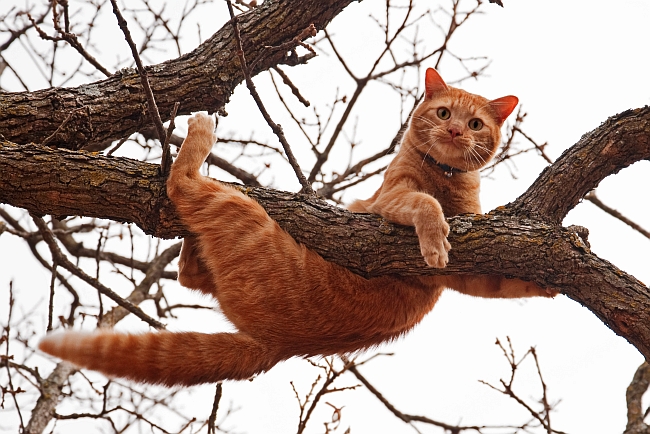Cats are mysterious creatures. Their eyes seem to stare into human souls, they can stalk silently in the night, and jump unimaginable heights. But one of the most baffling aspects of cat movement is how they manage to land on their feet after a fall. This is more than just a wives’ tale or a coincidence, studies have been able to unravel the enigma of why felines have the unique ability to land right-side up, no matter what position they were in when they fell.
How this is possible
Landing on their feet is known the “cat righting reflex,” and it develops in felines when they are 3-7 weeks old. The design of a cat’s skeleton is genius. They have 30 vertebrae in their spines, and have flexible backbones that enable them to twist, shift and maneuver mid-air. By using the cat’s vestibular apparatus (the inner ear which helps determine the cat’s equilibrium), the cat senses where his body is in relation to earth’s greatest spatial point of reference: the ground. The vestibular system instantly makes him aware of what position the head should be in, to align himself right side up in relation the ground. The cat holds his head in this place, and the spine arches and adjusts with the head, the front and back legs following suit. Then the forelegs come forward by the head to protect the head, and the joints of the back and front legs bear most of the weight on impact. During the fall, once the cat’s feet are facing the ground, he allows his body to relax and increase in limp flexibility so that the power of the shock will be lessened. The cat is able to accomplish correct orientation to the ground without have to change his angular momentum at all during the fall. These exact aerodynamic motions of felines were determined through slow-framed filming of falling cats.
(Note: In some studies that motion of the cat falling in mid-air revealed that the creature would flip itself by bending their back, and extending the hind legs, and pulling in the front legs or vice versa. Then by twisting his head one direction and his behind in the opposite direction, the small movements would cause the cat to flip over.)
Despite their ability to reorient themselves, unfortunately cats can still be injured by the fall depending on how great the distance was. Landing on the feet simply better enables the cat to absorb the shock. Surprisingly, veterinarians have treated breaks and fractures in cats that seem to be worse when the fall is shorter. They believe that this is caused because a cat falling from a one or two storey-building, will not have enough time to reposition himself as advantageously as a cat falling from 4 or 5 floors high.
Though not every cat may land on their feet during each fall, most cats certainly do. Felines have kept humans in their admiration for centuries because of impressive tricks and facts like these!

